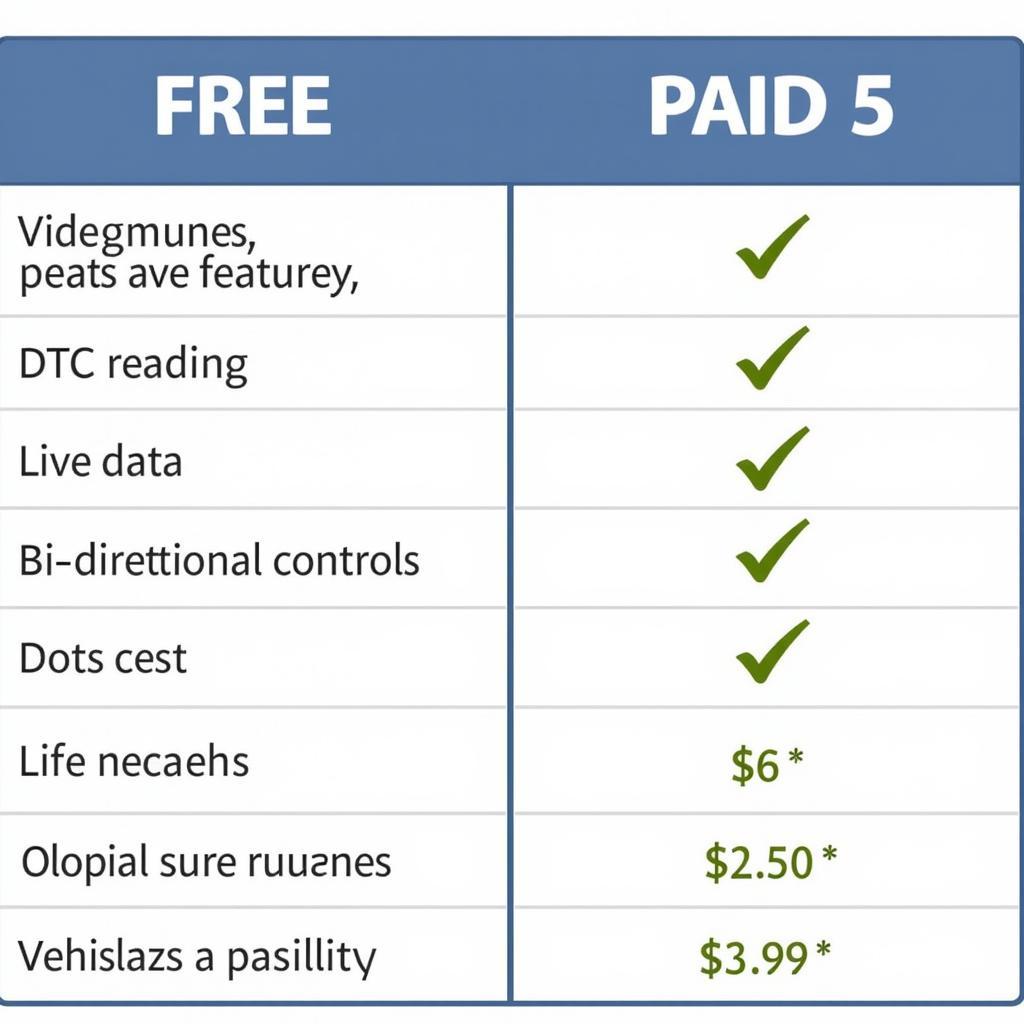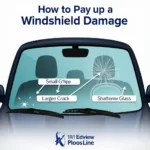Finding the right car diagnostic software can feel like navigating a maze. Whether you’re a seasoned mechanic or a DIY enthusiast, downloading car diagnostic programs is essential for troubleshooting and maintaining your vehicle. This guide will explore the world of car diagnostic software, from free options to professional-grade programs, and help you choose the best one for your needs.
Understanding the Need for Car Diagnostic Programs
Modern vehicles are complex machines, relying heavily on electronic control units (ECUs). These ECUs monitor and control various systems, from engine performance to airbag deployment. When something goes wrong, the ECU stores diagnostic trouble codes (DTCs), which are essentially clues to the problem. Car diagnostic programs allow you to access and interpret these DTCs, empowering you to pinpoint the issue accurately.
Free vs. Paid Car Diagnostic Programs: Which is Right for You?
Choosing between free and paid car diagnostic programs depends on your needs and technical expertise. Free options are a great starting point for basic diagnostics, while paid programs offer advanced features and broader compatibility.
Free Car Diagnostic Programs: A Budget-Friendly Option
Several free car diagnostic programs are available for download, offering basic functionality like reading and clearing DTCs. These programs are generally compatible with standard OBD-II protocols and can be used with a compatible OBD-II adapter.
- Advantages: Cost-effective, simple to use, suitable for basic diagnostics.
- Disadvantages: Limited functionality, may not be compatible with all vehicle makes and models, limited support and updates.
Paid Car Diagnostic Programs: Investing in Professional-Grade Diagnostics
Paid car diagnostic programs offer a wide range of features, including advanced diagnostics, live data streaming, bi-directional controls, and manufacturer-specific functionalities. These programs cater to professional mechanics and serious DIYers who require in-depth diagnostic capabilities.
- Advantages: Comprehensive features, wider vehicle compatibility, regular updates and support, access to technical documentation and resources.
- Disadvantages: Can be expensive, requires a higher level of technical expertise.
Choosing the Right Car Diagnostic Program: Key Considerations
Selecting the appropriate car diagnostic program involves considering several factors, including your vehicle’s make and model, your technical skills, and your budget.
Vehicle Compatibility: Ensuring Seamless Integration
Different car diagnostic programs have varying levels of vehicle compatibility. Some programs are designed for specific vehicle makes, while others offer broader coverage. Ensure the program you choose is compatible with your vehicle’s make, model, and year.
Features and Functionality: Tailoring to Your Needs
Consider the features you need based on your diagnostic requirements. Do you need basic DTC reading and clearing, or do you require advanced functionalities like live data streaming and bi-directional controls? Choosing a program with the right features will optimize your diagnostic process.
User Interface and Ease of Use: Navigating with Confidence
A user-friendly interface is crucial for an efficient diagnostic experience. Look for programs with intuitive navigation, clear data presentation, and helpful documentation.
Downloading and Installing Car Diagnostic Programs: A Step-by-Step Guide
Downloading and installing car diagnostic programs is usually a straightforward process. Most programs are available for download from the developer’s website or app stores. Follow the installation instructions provided with the software. You’ll also need a compatible OBD-II adapter to connect your computer or mobile device to your vehicle’s diagnostic port.
Best Practices for Using Car Diagnostic Programs
While car diagnostic programs are powerful tools, using them effectively requires some best practices. Always consult your vehicle’s service manual for specific diagnostic procedures and precautions. Interpreting DTCs accurately requires some automotive knowledge, so don’t hesitate to seek professional help if needed.
Safety First: Protecting Yourself and Your Vehicle
When working with car diagnostic programs and your vehicle’s electrical system, safety should always be your top priority. Disconnect the negative battery terminal before connecting any diagnostic equipment. Avoid working on the electrical system while the engine is running.
“Understanding the limitations of diagnostic software is crucial. It’s a tool to guide you, not a definitive answer. Always combine the data with your mechanical knowledge,” says John Smith, Senior Automotive Technician at Advanced Auto Solutions.
Conclusion
Downloading car diagnostic programs can empower you to take control of your vehicle’s maintenance and troubleshooting. From free options for basic diagnostics to professional-grade programs for in-depth analysis, choosing the right software is key. By understanding your needs, considering vehicle compatibility, and following best practices, you can effectively utilize car diagnostic programs to keep your vehicle running smoothly.
FAQ
- What is an OBD-II adapter?
- Can I use car diagnostic programs on any vehicle?
- What are DTCs?
- Are free car diagnostic programs reliable?
- Do I need technical expertise to use car diagnostic programs?
- How often should I use a car diagnostic program?
- What if I can’t interpret the diagnostic results?
“Remember, diagnostic software is only as good as the user. Continuous learning and hands-on experience are essential for accurate diagnosis and repair,” advises Maria Garcia, Lead Diagnostic Technician at AutoTech Diagnostics.
Need more support? Contact us via WhatsApp: +1(641)206-8880, Email: [email protected]. We have a 24/7 customer support team ready to assist you.


